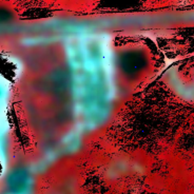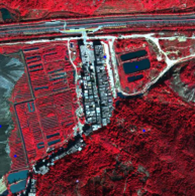High End Engineering Photonic Labs
Our goal is to provide the tools that help make our families and our neighborhoods safe places to live and work. We do that by creating optical devices that watch our borders, monitor the environment and provide help to public safety personnel to reduce crimes that impact our lives.
Products
Our optical systems elevate UAV surveys, enhance border and port security, and improve military operations. They also help in monitoring crop health, offering simple yet powerful solutions across various sectors.
Multispectral Imaging
Hyperspectral Imaging
News
Photonic to Develop Onboard SSA for EU Satellites in BODYGUARD Project
Photonic is proud to announce its participation in the European Defence Fund (EDF) 2023 project BODYGUARD, a pioneering initiative aimed at enhancing the autonomy and resilience of European space assets. This project seeks to develop advanced onboard capabilities for Space Situational Awareness (SSA), enabling satellites to independently detect, assess, and counteract a diverse range of threats.
Coordinated by Agenium Space from France, the BODYGUARD consortium brings together a diverse group of organizations from across Europe, including:
- Agenium Space (France)
- Photonic (Latvia)
- Elenic Teknolotzy of Rompotiks Symmetochon Societe Anonyme (Greece)
- Emtronix SARL (Luxembourg)
- Network Research Belgium SA (Belgium)
- Optronic Instruments & Products (Belgium)
- Oulun Yliopisto (Finland)
- Polar Orbital OY (Finland)
- Aldoria (France)
- Space Inventor APS (Denmark)
- Vimotek AB (Sweden)
The project has secured full funding from the EDF, with a total budget of €6,478,087.50, and is set to span 36 months.
BODYGUARD represents a significant advancement in the field of autonomous space defense. By focusing on the development of onboard SSA capabilities, the project aims to reduce reliance on ground-based systems, thereby increasing the operational independence and superiority of European satellites. These capabilities will enable satellites to autonomously detect potential threats, assess their severity, and implement appropriate countermeasures, such as deploying robotic interventions or laser systems to neutralize hazards.
Photonic’s role in BODYGUARD is development of satellite laser ranging system development working onboard satellite. Leveraging its extensive experience in satellite laser ranging research and innovation initiatives, Photonic will contribute to the project’s success by providing this important node of complex satellite system for space situational acquisition system, facilitating collaboration among many reputable EU space technology companies.

Laser communication has potential advantages in comparison to radio frequency communication for space vehicles. The project team developed the concept of the bidirectional communication system for free space (FSO) laser communication links from space terminals (ST) at low Earth orbit (LEO) nano-, microsatellites with emphasis on CubeSat or Unmanned Aerial Vehicle (UAV) to transportable or to stationary positioned optical ground based terminal (GT) to achieve the high data rate communications.
The project is being implemented in collaboration with LIAA*
Project ‘Planning for the Establishment of the Space and Related Sectors Testing and Trial Center,’ in collaboration with partner organizations Riga Technical University (Faculty of Mechanical Engineering, Transport, and Aeronautics, Aeronautics Institute) and SIA ‘Baltic Scientific Instruments.’
Funding has been allocated under the project ‘Development of the Space Technology and Service Cluster 2012-2015’
*Latvian Investment and Development Agency
Publications
Find publications and press releases. This page is still in development and is not a complete list of all publications.
- Truncated apodizers for engineering the point spread function of optical systems
- Robust Demultiplexing of Distinct Orbital Angular Momentum Infrared Vortex Beams Into Different Spatial Geometry Over a Broad Spectral Range
- Product: delivery of a portable SLR (PSLR) to Curtain University (Perth) in Australia
- Service: photonic engineering services for space applications
- Publication: “Progress of optical system in Moon orbiter”. M. Abele, L. Osipova, E. Rutkovska, V. Veckalns. LU conference. Astronomy and Geodesy section (2011)
- Publication: “Cameras for the lunar surface observation of the satellite orbit”. M. Abele, E. Rutkovska. 68. LU conference. Astronomy and Geodesy section (2010)
Bidirectional space to ground
laser communication system for cubesat
Laser communication has potential advantages in comparison to radio frequency communication for space vehicles. The project team developed the concept of the bidirectional communication system for free space (FSO) laser communication links from space terminals (ST) at low Earth orbit (LEO) nano-, microsatellites with emphasis on CubeSat or Unmanned Aerial Vehicle (UAV) to transportable or to stationary positioned optical ground based terminal (GT) to achieve the high data rate communications.
Very accurate pointing and tracking capability will be provided by options of optical auto-tracking for both ST and GT. This capability will provide fast moving of flying platforms with very precise visible movement tracking of their optical axes of telescopes and their optical alignment. Such improvement will allow optical transmission of data over a long distance while requiring fewer resources from the hardware of flying platform ST. These solutions give significant advantages compared to existing solutions. Our innovative diffraction resolution without aberration of the optical system with broad spectrum band will be used for the ST during of work of transmission, receiving, and video optical channels. The optical systems of GT embedded in the lightweight 2-axes alt-azimuth mount with enhanced turning range will allow smooth, high-speed tracking without any gaps at zenith. All optical system axes of GT and the alt-azimuth mount axes are controlled by an auto-collimator having unique auto-adjustment feature. The innovative stationary positioned GT is also proposed.
Partners





Contact Us
Get in Touch
- (+371) 29395146
- andris.treijs[at]heephotonic.eu
- (+371)26545443
- jelena.kupate[at]heephotonic.eu
hours
- Mon-Fri 9:00 - 18:00
Address
-
Nomales 6-25
Riga, LV-1002, Latvia




